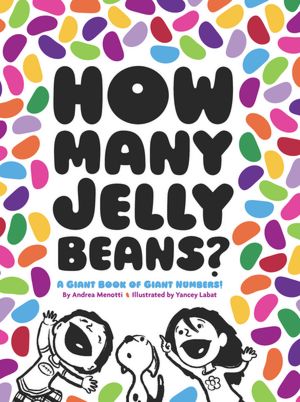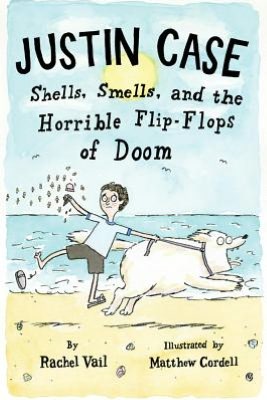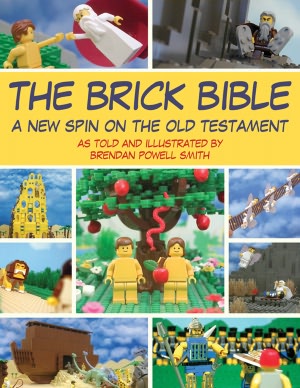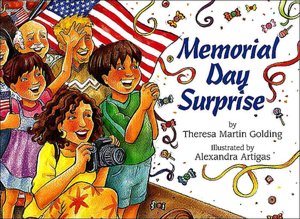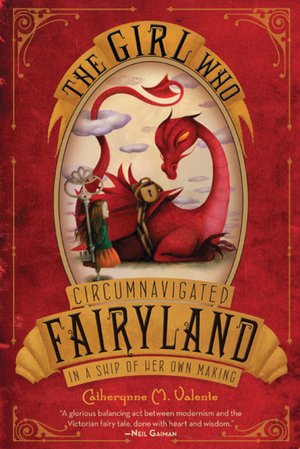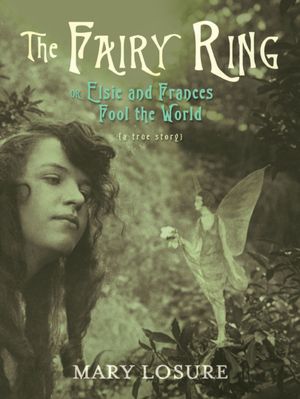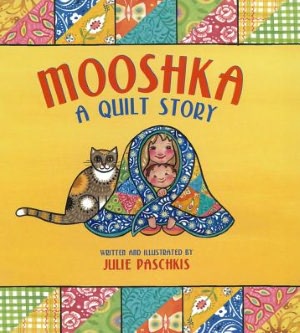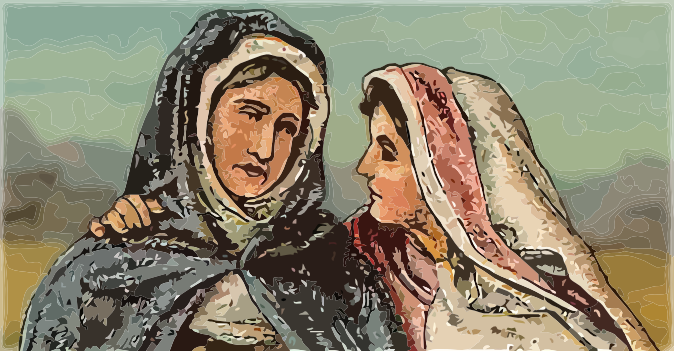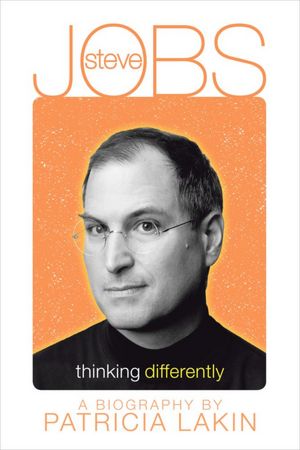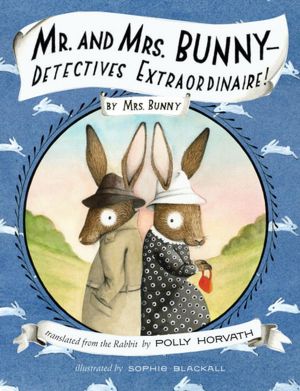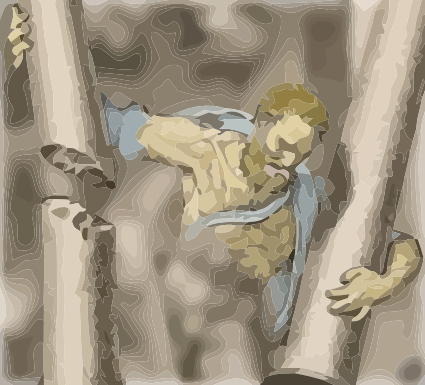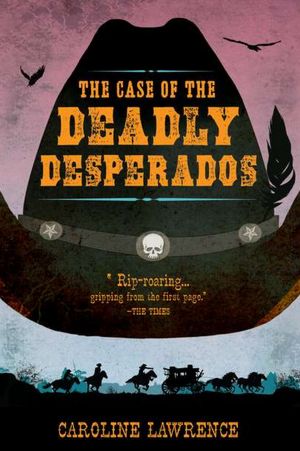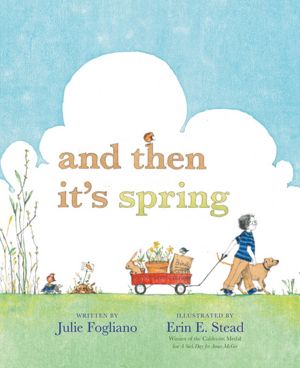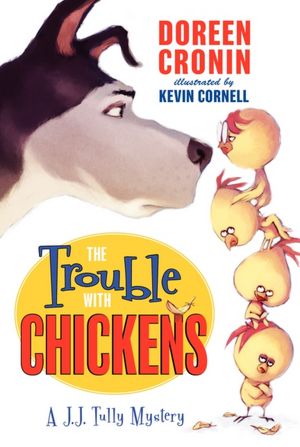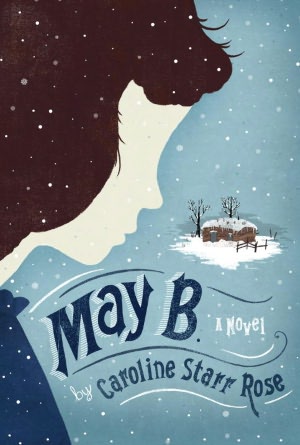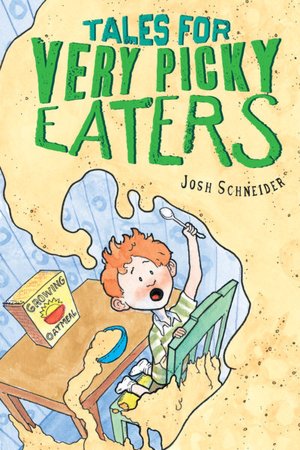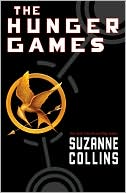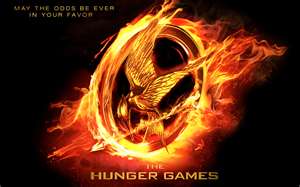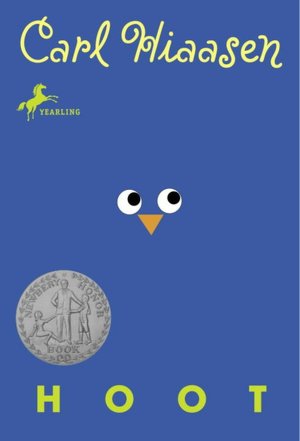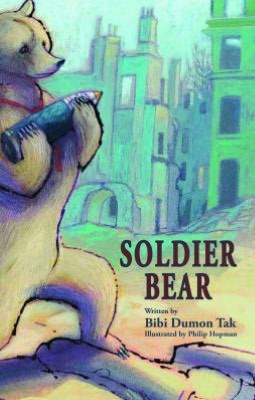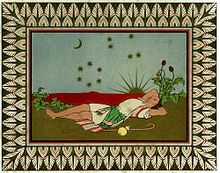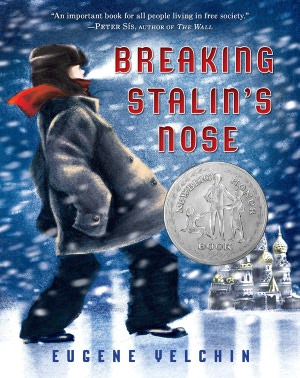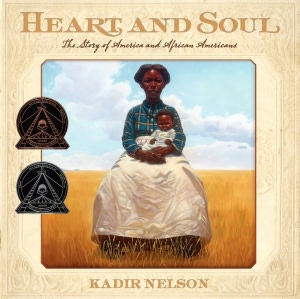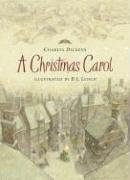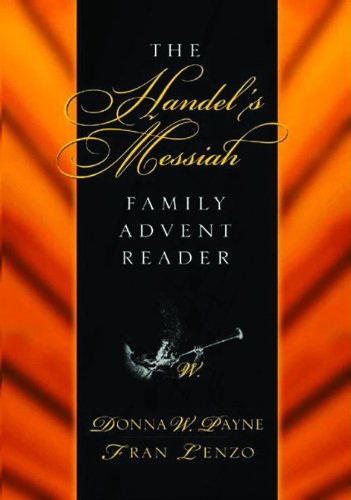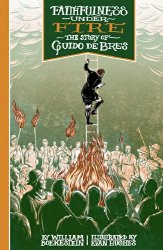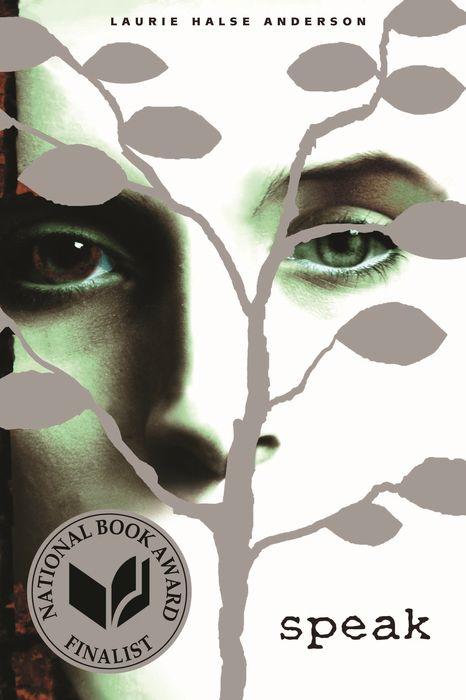Posts by Janie Cheaney
Mystery Under the Stars
. . . In which we crack the spines of two middle-grade novels that have been getting a lot of favorable press: both are mysteries, both take place in atmospheric locations during high summer, and both are narrated by misplaced eleven-year-olds girls who speak well above their grade level. Kepler’s Dream, by Juliet Bell. Putnam,…
Read MoreCrazy Numbers
Some kids like numbers and are good with them; others aren’t. Though no longer a kid, I fall in the latter category,but these two books helped me understand their appeal a little more: Edgar Allan Poe’s Pie: Math Puzzlers in Classic Poems, by J. Patrick Lewis, illustrated by Michael Slack. Harcourt, 2012, 37 pages. Ages…
Read MoreTough Guy: An Interview with Andrew Klavan
Andrew Klavan’s new novel, Crazy Dangerous, is the story of complicated characters in a complex world. Not necessarily the story you’d expect from a Christian author these days, but then not much about Andrew Klavan fits the Christian author stereotype. He grew up in a Jewish home, and his writing–from screenplays to editorials in the…
Read MoreCrazy Dangerous by Andrew Klavan
BIG ANNOUNCEMENT: Coming up on Friday, an interview with Andrew Klavan himself! And we have a copy of Crazy Dangerous to give away!! Read on for details . . . Crazy Dangerous, by Andrew Klavan. Thomas Nelson, 2012, 324 pages. Age/interest level: 12-up. Nobody can ever say Andrew Klavan doesn’t know how to write an…
Read MoreBunk Beds, Backpacks and Bibles
Summer- camp stories are a staple in children’s literature–we reviewed one worthy example on Tuesday. But for today, let’s look at “real life.” Do your summer plans include church or Bible camp? In years gone by, it used to be a given that kids would benefit from a week or two away from home in…
Read MoreThe Great Outdoors
Your kids may be packing for camp this month–or maybe not. (Watch for my post on Bible/Christian camps later this week.) While the weather’s warm and the days are long, they can at least get outside and play some . . . you know, outdoor games. Does anybody remember how to play Capture the Flag? …
Read MoreThe Bible in Brickbats
The Brick Bible: A New Spin on the Old Testament, as told and illustrated by Brendan Powell Smith. Skyhorse Publishing, 2011, 270 pages. In his Introduction, the author reveals why he decided to stage Bible stories with Legos: “People should really know what’s in the Bible. For a book that so many of us consider…
Read MoreIn Memory – Picture Books For Memorial Day
Memorial Day, like Veterans Day, is one of those overlooked observances that to government, library, and bank employees means a chance to catch up or take a long weekend. Kids—even grownups!—easily get confused about the difference between Memorial Day (last Monday in May, to honor war dead) and Veterans Day (Nov. 11, to honor living…
Read MoreSaturday Review: Among the Fairies
Tagging along after yesterday’s post, here are two relatively new (and one older) titles in that perennial genre, the fairy tale: Small Persons with Wings, by Ellen Booraem. Dial, 2011, 302 pages. Age/interest level: 12-16. Melissa Turpin learned to give up imagination in kindergarten, when her fairy friend Fidius turned out not to be real. …
Read More“Do you believe in fairies?”
The Fairy Ring, or Elsie and Frances Fool the World, by Mary Losure. Candlewick, 2012, 168 pages. Age/interest level: 10-14 When Frances Griffith arrived in England with her family in the winter of 1917, the place didn’t seem like home. Though English by birth, she had grown up in sunny South Africa and the Yorkshire…
Read MoreThe Secret Lives of Animals
The One and Only Ivan, by Katherine Applegate. HarperCollins, 2012, 304 pages. Age/interest level: 8-up. Last week, a little bluebird appeared in our wood stove. The stove was not fired up, of course: at this time of year it’s an iron box about 18” square with a sooty floor and a glass door. My husband…
Read MoreThinking Different(ly)
I’m way behind on my Saturday reviews, so it’s time to catch up—with a Tuesday review tagging off of last Friday’s Steve Jobs post. Jobs was known more for his insights than his inventions—he never really invented anything, but he could see how new technology could be adapted to new uses. “Think Different” was one…
Read MoreBible Reading Challenge – Week 18
This post is part of the members’ only content here at Redeemed Reader. Want full access? Find out more about membership here. Username Password Remember Me Forgot Password
Read MoreSteve Jobs: American success story?
Steve Jobs: Thinking Differently, by Patricia Lakin. Aladdin (Simon & Shuster), 2012, Age/interest level: 10-14. Who Was Steve Jobs? by Pam Pollack and Meg Belviso, illustrated by John O’Brien. Grosset & Dunlap, 2012, 105 pages. Age/interest level: 8-12. “I started thinking that maybe Thomas Edison did a lot more to improve the world than Karl…
Read MoreMr. and Mrs. Bunny: Detectives Extraordinaire! by Mrs. Bunny, translated from the Rabbit by Polly Horvath
Mr. and Mrs. Bunny: Detectives Extraordinaire! by Mrs. Bunny, translated from the Rabbit by Polly Horvath, illustrated by Sophie Blackall. Schwartz & Wade, 2012, 248 pages. Age/interest level: 8-12. Madeline is a very resourceful young lady, especially for going-on-eleven, but even she is flummoxed when her parents are kidnapped by what appears to be a…
Read MoreBible Reading Challenge, Week 17
This post is part of the members’ only content here at Redeemed Reader. Want full access? Find out more about membership here.
Read MoreHuddled Masses and Deadly Desperados
City of Orphans, by Avi. Atheneum, 2011, 350 pages. Ages 10-14. New York, 1893: “Look at someone on the street and you may never see that person again—ever. Then you bump into a stranger and your whole life changes—forever.” Hawking newspapers on the street is no way to make a living, especially when all you…
Read MoreBad Trips
Summer is the traditional time for road trips, and road-trip novels traditionally roll out in the spring. A title from this year and one from last have some interesting “faith” connections, but it’s unclear what faith is getting connected . . . You Don’t Know About Me, by Brian Mehl. Delacorte, 2011, 404 pages. Age/interest…
Read MoreCowboys and Other Guy Stuff: Poems by David Harrison
The title is a misnomer; poetry is for girls, too—and humans in general. In spite of my lazy attitude toward it, poetry is the highly personal act of touching the heart of human experience in a way that communicates like nothing else. Not to everyone, of course. But to enough. With over seventy books to…
Read MoreSpeaking of Poetry: An Interview with David Harrison
I’ve known David since the publication of my first novel, when we started seeing each other at children’s book events. He’s tall, thin, and genial, and one of the most dedicated writers I’ve ever known. Up until a few years ago he managed his family business full-time–while holding to a very active writing. publishing, and speaking schedule. …
Read MoreThe Splendor of the Ordinary
I have a confession to make: I’m not a fan of poetry. For someone who loves literature, I see this not as a mere preference (as for pancakes over scrambled eggs), but an actual defect. It may be due to mental laziness (poetry can be so difficult) or a childish appetite for narrative (Tell me a…
Read MoreHow Our Gardens Grow
Planting a garden is an exercise in faith—the assurance of things hoped for, and the evidence of things not seen. Young children are fascinated with the phenomenon of planting a seed and watching a tiny green sprout thrust itself above the soil—the bowed necks of pole-bean sprouts making their first shy appearance still thrills me. …
Read MoreDetectives: Hard Boiled and Four-Legged
Ever since Edgar Allen Poe, one of the most reliable publishing genres has been the mystery or detective novel. I’m not a huge fan myself, but when the Nancy Drews were circulating through fourth grade I read a few, and many of the popular series books of the time (that weren’t about nurses) often had…
Read MoreMay B by Caroline Starr Rose
May B., by Caroline Starr Rose, Schwartz & Wade, 2012, 225 pages. Reading Level: Middle Grades, Ages 10-12 Recommended for: Ages 10-12 and up Bottom Line: May B is the moving story of a young girl on the Kansas frontier whose will and courage are tested when she’s left alone in a sod hut. “I won’t…
Read MoreWonder
Wonder, by R. J. Palacio. Knopf, 2012, 320 pages. Ages 8-up August (Augie) Pullman obviously doesn’t remember the day he was born, but in the first few chapters he tells us his mother’s version. The story as she tells it (with sound effects) always cracks up Augie and his sister because of his mother’s depiction…
Read MoreDealing with Death: Bridge to Terabithia
The first time I ever heard my father cry was when my uncle, the brother closest to him in age and disposition, was dying of brain cancer. The process took several months, during which Uncle Charles progressively lost his faculties and faded to a ghost of a human being. I was about 11 at the…
Read MoreThe Fault in Our Stars by John Green
As Jesus takes us to the cross this week, I’d like to spend some time looking at recent and classic children’s literature that addresses the subject of death. Please understand that I make no blanket recommendation of these books, especially the one I’m reviewing today, which contains some bad language and sexual situations (and the…
Read MoreBlue Like Jazz
Blue Like Jazz: Nonreligious Thoughts On Christian Spirituality, was published in 2003 by Thomas Nelson. Since then it has become a staple of Christian college campuses and nondenominational churches that meet in downtown warehouses and storefronts. This spring we get the movie version, which will probably enjoy a very limited run before going to disc…
Read MoreTalking Over The Hunger Games: conclusion
We’re wrapping up our conversation (begun here) with Morgan Lee and Caity Kullen on the effect of The Hunger Games on the audience it was written for, namely older teens and twenty-somethings. This week I wanted to talk about the trilogy’s relevance (if any) for Christian kids and parents. A question for both of you:…
Read MoreThe Adoration of Jenna Fox by Mary Pearson
The Adoration of Jenna Fox, by Mary E. Pearson. Holt, 2008, 265 pages. Reading Level: Young Adults, 15-18 Recommended for: ages 15-18 and up Bottom Line: After a horrific accident, Jenna Fox discovers that she has been the subject of a bizarre science experiment, which raises profound questions for her identity. My half-filled memory is…
Read MoreUnwind by Neal Shusterman
Unwind by Neal Shusterman. Simon & Shuster, 2007, 352 pages Reading Level: Young Adults, ages 12-15 Recommended for: ages 15-18 Bottom Line: Unwind presents a harrowing future in which parents may request their children be “unwound” at the age of 13 if their lives are deemed unworthy. The Heartland War was fought to settle the…
Read MoreSaturday Review: Books for Beginning Readers
I read a lot of books for this blog. All the ladies at the circulation desk at the Greene County Library (bless their hearts!) know me by name. Some books I don’t finish, but most are like that box of old worksheets and supplies left over from homeschooling days that I just might want to…
Read MoreTalking Over the Hunger Games, Part One
Since Susanne Collins’ Hunger Games trilogy (reviewed here) has sparked so much discussion in school cafeterias and dorm rooms (not to mention break rooms and car pools), we thought it would be worthwhile to get different points of view—particularly the young readers for whom the books were written. So we’ve invited two Christian college students…
Read MoreHungry
Suzanne Collins: The Hunger Games, Scholastic, 2008, 374 pages. Catching Fire, Scholastic, 2009, 391 pages. Mockingjay, 2010, 387 pages. Age/interest level: 14-up. READER ADVISORY: This review contains a major spoiler about the last volume in the series–warning ahead! At some time in the distant future, our great and free society has collapsed. The reasons are…
Read MoreA Parent’s Guide to Environmentalism in Children’s Literature, Part Two
Wrapping up our two weeks of Lorax-inspired environmental emphasis, how do children’s books specifically reflect growing concern about our care of the earth? Because of course they do. Any publisher will gravitate toward books that speak to a current issue, so expect to find plenty of books in your local school and public library about…
Read MoreCities and Gardens
As mentioned last Friday, some professional worriers have noted that children’s picture books are displaying a decided preference for cityscapes as opposed to natural landscapes. If the winners of this year’s Caldecott awards (given by the American Libary Association for outstanding picture books) are any indication, this supposed trend is only half true. Two of…
Read MoreJulie of the Wolves by Jean Craighead George
Julie of the Wolves by Jean Craighead George. Harper Collins, 1972 (paperback reissue 2003). 208 pages Reading Level: Middle Grades, 10-12 Recommended for: Young adult, ages 12-15 Bottom Line: Julie of the Wolves presents an absorbing but over-romanticized view of life in the wild, paired with a low view of white civilization. The title character,…
Read MoreHatchet by Gary Paulsen
Gary Paulsen’s classic survival novel Hatchet offers a realistic–as opposed to romantic– view of nature and what it takes to survive in the wild. Hatchet by Gary Paulsen. Simon & Shuster, 1987 (paperback re-issue 2006). 192 pages Reading Level: Middle Grades, ages 10-12 Recommended for: Ages 12-15 and up (especially boys) In a culture where…
Read MoreSoldier Bear
Soldier Bear, by Bibi Dumon Tak, illustrated by Philip Hopman. Translated by Laura Watkinson. Wm. B. Eerdmans, 2011, 145 pages. Age/interest level: 9-12 World War II started when the Germans and the Russians went into Poland, the Germans from the left and the Russians from the right. They stopped exactly in the middle, where they…
Read MoreBible Reading Challenge, Week 8
This post is part of the members’ only content here at Redeemed Reader. Want full access? Find out more about membership here.
Read MoreCountdown by Deborah Wiles
Countdown (the Sixties Trilogy) by Deborah wiles. Scholastic, 2010, 377 pages. Reading Level: Middle grades, ages 10-12 Maturity Level: 4 (ages 10-12) and up Bottom Line: Countdown takes middle-grade readers back to the Cuban missile crisis, as 11-year-old Franny Chapman deals with the fear of events spinning out of control. To Franny Chapman, whose father…
Read MoreThe Apothecary by Maile Meloy
The Apothecary, by Maile Meloy. Putnam/Penguin, 2011, 353 pages. Reading Level: Young Adults, ages 12-15 Maturity Level: 5 (ages 12-14) Bottom Line: The Apothecary is a Cold-War-era thriller for the upper-middle grade/YA age, with a supernatural angle that stretches credulity. Janie Scott, age 14, has just moved to London with her parents, TV writers who…
Read MoreBetween Shades of Gray by Ruta Sepetys
Between Shades of Gray, by Ruta Sepetys. Penguin/Philomel, 2011, 338 pages. Reading Level: Young Adults, ages 12-15 Maturity Level: 6 (ages 15-18) and up June 14, 1941, Kaunas, Lithuania: They took me in my nightgown. Fifteen-year-old Lina had no preparation for what would happen that night, but looking back, it added up: her parents had…
Read MoreBreaking Stalin’s Nose by Eugene Yelchin
Breaking Stalin’s Nose, written and illustrated by Eugene Yelchin. Henry Holt & Company: 2011, 154 pages. Reading Level: Middle grades, ages 10-12 Maturity Level: 5 (ages 12-14) and up Sasha Zaichik, age 10, is writing a gushy letter to Comrade Stalin when the story opens. His naiveté should be charming but very soon it turns…
Read MoreHeart and Soul
Heart and Soul: the story of America and African Americans, written and illustrated by Kadir Nelson. HarperCollins, 2011, 108 pages (including bibliography, index, and chronology). Age/interest level: 10-up. This year’s winner of the Coretta Scott King Award (for excellence in children’s literature that reflects the African-American experience), is mostly a treasure. Spanning the history of…
Read MoreNo Place Like Norvelt
Dead End in Norvelt, by Jack Gantos, FSG, 2011, 341 pages. Age/interest level: 10-13. (2012 Newbery Medal winner) Norvelt, PA, 1962: a depression-era-town that’s slowly dying, along with its many elderly residents. Jack Gantos is one of the few kids—enough to fill a baseball roster—but at the beginning of the summer it looks like he…
Read MoreBible Reading Challenge, Week 6
This post is part of the members’ only content here at Redeemed Reader. Want full access? Find out more about membership here.
Read MoreDickens Resource Roundup: Web and Video
On the web Even without a Dickens bicentennial to ramp them up, there are lots of Dickens sites, containing links to other sites containing links to lesson plans, online biographies, historical and social background material. Who has time to comb through them all? Not me—but here are some of the more fun and helpful sources…
Read MoreA Roundup of Dickens Resources: Books
My first exposure to Charles Dickens was the original Classics Illustrated edition of A Tale of Two Cities. The last panel of Sidney Carton climbing the steps to the guillotine (“It is a far, far better thing I do now . . .”) is burned into my memory. So I’m perfectly fine with graphic-novel versions…
Read MoreThe Best of Toms
We’re kicking off Dickens week with a fun excursion into the heart of Victorian London. Be sure and enter our Dickens trivia contest for a chance to win your own copy! The Cheshire Cheese Cat: A Dickens of a Tale, by Carmen Agra Deedy and Randall Wright, drawings by Barry Moser. Peachtree: 2011, 228 pages. …
Read MoreHappy Birthday, Mr. Dickens!
Charles Dickens was born on February 7, 1812, which makes this coming Tuesday his bicentennial. They’ve been making a big deal of it for some time in the U.K., no surprise (here’s the Bicentennial Website), but we like him over here, too. Charles Dickens was one of the most successful authors who ever lived, both…
Read MoreDon’t Try This At Home?
So, last Friday the whole boys-and-reading subject came up, and why boys seem to prefer non-fiction. I think this generally true, though there are plenty of exceptions, and boys will read fiction if it includes fires and explosions. (Just kidding.) I think there are a number of reasons for the nonfiction preference, and they apply…
Read MoreOscar Night for Librarians
Actually, it’s not at night, but first thing in the morning. And there are no backless evening gowns or acceptance speeches (those come later). But school and public librarians who were unable to attend the ALA’s midwinter conference, held this year in Dallas, tuned in as breathlessly as any movie-lover to the live webcast of…
Read MoreJust the Facts, Mom
Everybody likes stories. But a significant number of bodies prefer their stories to be true, or at least factual. I’ve long heard it rumored among librarians and classroom teachers that if boys have to read, they’re often more likely to reach for a non-fiction book than a novel. It’s an inclination that persists into adulthood,…
Read MoreRaising Readers: An Interview with Alan Jacobs
Alan Jacobs is Professor of Literature at Wheaton College, where he went to teach for two semesters and stayed for 28 years. Teaching is his joy, and writing is his particular gift, and God has placed him where he can speak to both the Christian and the secular academic world (see this interview with PBS,…
Read MorePleasures and Distractions
The Pleasures of Reading in an Age of Distraction, by Alan Jacobs. Oxford University Press, 2011, 150 pages. Age/interest: adult. Heads-up: Watch for our interview with Alan Jacobs on Tuesday! Somewhere on my shelves is a loosely-bound copy of How to Read a Book, by Mortimer Adler. It seemed a good idea at the time:…
Read More*Secrets at Sea by Richard Peck
*Secrets at Sea, by Richard Peck, illustrated by Kelly Murphy. Dial, 2011, 239 pages. Reading Level: Middle grades, ages 8-10 Recommended for: ages 8-10 and up Bottom Line: In Secrets at Sea, a quartet of mouse siblings set out for the adventure of their lives: a fantasy saga that’s fun and literate and even profound…
Read MoreTollbooth and Its Imitators
Last August saw the 50th anniversary of The Phantom Tollbooth—has it been that long already? We’re a little late but wanted to observe the occasion with a double review. Tollbooth is a classic of its kind: a “puzzle” story, where structure and characters contribute to the puzzle and can be used to illustrate mathematical or…
Read MoreOur 2012 Bible Reading Challenge: an Introduction
This post is part of the members’ only content here at Redeemed Reader. Want full access? Find out more about membership here.
Read MoreA Nest for Celeste by Henry Cole
A Nest for Celeste: A Story About Art, Inspiration, and the Meaning of Home by Henry Cole. HarperCollins, 2010, 336 pages. Reading Level: Middle grades, ages 8-10 Recommended for: ages 8-10 and up Celeste lives in the wall of a Louisiana plantation house, where she weaves baskets of grass and any other material at hand—lately…
Read MoreWhat’s Lefse?
The Invention of Lefse: a Christmas Story, by Larry Woiwode. Crossway, 2011, 63 pages. Age/interest level: 8 and up. “Lefse? What’s lefse?” is the epigraph at the beginning of Larry Woiwode’s latest story. That was my question, too: Is it a machine? a person? an idea? No (as some readers will already know)—it’s something more…
Read MoreWar Horse
War Horse, by Michael Morpurgo. Scholastic, 2011 (originally published 1982), 192 pages. Age/interest level: 8 and up. Michael Morpurgo was already established in the UK as a poet, playwright, and children’s writer when he and his wife began a hands-on charity called Farms for City Children. This was a program that took poor children from…
Read MorePOW! The Comic-Book Surge
The December 21 opening of The Adventures of Tintin: the Secret of the Unicorn, should focus attention not only on the boy from Belgium but also on the graphic arts medium. That’s why I’m using this opportunity to introduce Kingstone Media group—but first, a little detour around Tintin. It’s a funny name for a…
Read MoreHearing “The Voice”
The Voice Bible proposes to do something new: present God’s word narratively rather than propositionally. That may be an overstatement, as the Bible is propositional as well as narrative—that is, it makes statements of truth (also as poetic expressions, laments, songs, psychological evaluation, moral judgments, and rousing exhortations) while it tells a story. But story…
Read MoreRecommendations for Teens
As reported by the L.A. Times only a week ago, “Young adult continues to be the literary world’s fastest-growing genre.” There are a lot of reasons for that, some discussed here, but one big reason is that, after fifty or so years of pretentious, plotless literary fiction, adults are lining up for good stories. At…
Read MoreBooks for Emerging Book-Lovers
Picture books are traditional, and YA is new and glamorous, but the area of literature I consider to be “classic children’s” is that big glorious milestone middle—the golden years between, say, eight and twelve, when you were old enough to hop on your bike and seek adventure in the neighboring woods and vacant lots, when…
Read MoreThoughts on A Christmas Carol: Reading and Watching
Charles Dickens, unlike other great authors like Herman Melville, had the good fortune of enjoying widespread fame and popularity during his lifetime. A Christmas Carol appeared on the upswing of his fame, written in six weeks during the autumn of 1843 and published that same year, on December 17. It was an instant classic, not…
Read MorePicture Book Roundup
Late last year an article in the New York Times caused the book world to shiver and shake and ask itself, “Is the picture book dead?” The death of various entities has been proclaimed fairly often but reports are usually exaggerated–the picture book seems to be getting by just fine off life support. They’re more…
Read MoreA More Excellent Way
On Friday we looked at some very popular picture books that you just might find under your tree. Some of them are better than others, but in the spirit of I Cor. 12:31 I’d like to suggest a more excellent way to get the Christmas message across with picture books. So allow me to roll…
Read MoreThanks Anyway . . .
Any bookstore manager can tell you that one of the most reliable customer types is the older woman with no children in the household (either never had them, or they’re grown) shopping for a children’s book. I’m a grandma buyer myself and don’t want to misrepresent the breed, but I have a fairly experienced view…
Read MoreHe’s Coming!
In the fundamentalist church where I grew up, we never did advent. I never even understood what the word meant until well into my twenties, when we began to visit other churches. The practice of advent, whether in family devotions or in church, can grow as stale and rote as any other, but it’s something…
Read MoreMillion-Dollar Throw by Mike Lupica
Million-Dollar Throw by Mike Lupica. Penguin, 2009, 244 pages. Reading Level: Middle Grades, ages 10-12 Recommended for: ages 10-14 Bottom Line: Mike Lupika’s young hero in Million-Dollar Throw endures a pressure cooker of emotion and competition but comes out stronger for it. If recent scandals have taught us anything, it’s that when football (or any…
Read MoreThrough My Eyes by Tim Tebow
Through My Eyes by Tim Tebow and Nathan Whitaker. Harper, 2011, 272 pps. Ages 9 and up. Review by Emily Whitten. Tim Tebow is one of the biggest names in football these days, and one of the most divisive. Unlike many media darlings, the fame he enjoys (or doesn’t) is based in some part to…
Read MoreHome-Field Advantage by Justin Tuck
Home Field Advantage by Justin Tuck, illustrated by Leonardo Rodriguiez. Simon & Shuster, 2011, 22 pages. Reading Level: Picture book, ages 4-8 Recommended for: ages 4-6 Bottom Line: NFL star Justin Tuck tells a humorous story from his childhood that underscores the value of family. Justin Tuck sounds like a good guy. He and his…
Read MoreWays to Be Grateful
I’m sitting in an upstairs bedroom as the smell of pumpkin pie wafts up the stairwell. Tomorrow the family will arrive, starting around noon: not just relatives, but friends and tag-alongs and people I’ve never met before who will be family for one day. Thanksgiving unites us like no other holiday. No matter what one’s…
Read MoreWhat’s on the Menu? Literary Cookbooks!
Food occupies our minds a lot this time of year—to gather around, to give away, to serve to strangers at the Salvation Army, to stuff into ourselves at the Thanksgiving table. What better time to round up a selection of cookbooks inspired by children’s classics—good for reading and munching. Fairy Tale Feasts: a Literary Cookbook…
Read MoreThankful for Cheryl Harness
The Adventurous Life of Myles Standish, by Cheryl Harness. National Geographic, 2006, 143 pages. Age/interest level: 8 and up. Thanksgiving means a raid on the supply cabinet to find those orange and brown streamers, fat turkeys and apple-cheeked pilgrim boys and girls to staple to the bulletin board. But who were the pilgrims, really? As…
Read MoreThose Who Served–And Serve
Veterans’ Day is one of those holidays that sneak up on me. I intend to write a note to a veteran, wear red, pray a special prayer . . . and usually don’t. This year is no exception; otherwise I would have prepared this post a week ago to give any interested parents and teachers…
Read MoreSalem’s curse
Wicked Girls, by Stephanie Hemphill. HarperCollins, 2010, 389 pages. Young Adult Father of Lies, by Ann Turner. HarperTeen, 2011, 326 pages. Young Adult There are a lot of reasons why the Salem Witch Trials of 1692 continue to attract attention. It’s a story that feeds into a lot of current political and sociological trends: feminism,…
Read MoreThe Pilgrim’s Progress, Part 4: Home At Last
If you’re just joining us, here’s the Introduction, Part 1, Part 2, and Part 3. For the Project Gutenberg online version, go here. The worst is over—in a way. In another sense, Christian’s greatest trial is still ahead, but for awhile longer he will be plodding along with Hopeful, encountering other travelers and engaging in…
Read MoreThe Story Behind the Confessions
Faithfulness Under Fire: The Story of Guido de Bres (2010) and The Quest for Comfort: The Story of the Heidelberg Catechism (2011), by William Boekestein. Reformation Heritage Books, 28 pp. Age/interest level: 10-14. Ten years ago, I was not very clear on what Reformed churches call the “Three Forms of Unity.” I may have read…
Read MoreThe Pilgrim’s Progress, Part 3: Dangerous Detours
Introduction Part One Part Two (The online text we’re using is located at Project Gutenberg, here.) Vanity Fair After leaving Talkative behind, Christian and Faithful notice Evangelist catching up to them. Even though he’s going in the same direction, he has probably lingered to encourage and instruct other pilgrims on the way. His speech is…
Read MoreHall of Heroes
Reformation Heroes, by Diana Kleyn with Joel R. Beeke. Reformation Heritage Books, 2009, 250 pages. Age/interest level: 11-up. October 31, 2017 (only six years from now) will be the 500th anniversary of the day Martin Luther nailed his 95 theses to the Wittenberg church door, sparking the Protestant Reformation. It’s impossible to over-emphasize the importance…
Read MoreThe Pilgrim’s Progress 2: Salvation Highway
Introduction Part One Slackers and Interlopers Right away, Christian learns that salvation is not for sissies! The sleeping men have for various reasons failed to take the faith seriously: can anyone relate? I must guard myself against presumption, or assuming that just because I’ve said or done certain things I don’t have to be on…
Read MoreHow to Be Good
Saint Training, by Elizabeth Fixmer. Zondervan, 2010, 233 pages. Age/interest level, 10-14. Mary Claire, sixth grader at St. Maria Goretti School in Wisconsin, has lofty ambitions: she’s determined to become a saint. But, as they say, “God has other ideas.” From early spring to the fall of 1967, Mary Claire’s life becomes a little case…
Read MorePilgrim’s Progress: From the City of Destruction to the Cross
This is Part One of our read along of The Prilgrim’s Progress for high school age and up. Here’s the Introduction. The City of Destruction Something about Bunyan’s day that is very different from ours: everybody was a “Christian,” and almost everybody went to church. That’s why the Pilgrim’s dilemma is so hard for his…
Read MoreThe Pilgrim’s Progress: Introduction
John Bunyan was a dissenting pastor of the mid-17th century: “dissenting” meaning that some of his biblical interpretations differed from those of the established (state-supported) Church of England. His views were not so different that they were something other than Christianity; he was most definitely a Christian. Where he differed from the established church was…
Read MoreAutism: Fiction and Fact
Marcelo in the Real World, by Francisco X Stork. Scholastic, 2009, 312 pages. Age/interest level: 14-up. Dancing With Max, by Emily Colson. Zondervan, 2010, 200 pages. Age/interest level: 18-up. How do I describe it? It is like listening to very loud music with headphones. Only the music seems to be coming from inside the brain.…
Read MoreLiving With Autism
Nobody knows yet exactly what causes it, or why it occurs more in certain income levels, or even quite what defines it, but autism becomes more of an issue with each passing year. It may be in your family or church or neighborhood, and your children have questions. Two well-received novels and one picture book…
Read MoreThe Use and Abuse of Youth Literature
Using YA literature as therapy is a road marked with pitfalls.
Read MoreWhat Gets a Book “Banned”?
In my post on Tuesday, I included a brief survey of the ALA’s “Top Ten Banned Books for 2010.” Let’s take a closer look at that list, just to see what kinds of books are “banned” and what might be the problem with them. Counting up from the bottom, they are 10. Twilight, by Stephanie…
Read MoreInterview With Meghan Cox Gurdon
Early last June, the YA publishing world was rocked by a column in the Wall Street Journal by Meg Cox Gurdon, who reviews children’s books for the paper. Titled “Darkness Too Visible,” the short piece related the experience of Amy Freeman, mother of three, who visited the local Barnes & Noble to buy a book…
Read MoreBanned Books Week: Live It, Love It, Get the T-Shirt!
Back in 1984, that fateful year when we first decided to teach our kids at home, very little curriculum was available—strange as it may seem to those moms and dads who wander the apparently endless curriculum halls of homeschooling conventions today. You can pore over catalogues and websites until your eyes glaze over, and still…
Read MoreLord of Light
They had guessed before that this was an island: clambering among the pink rocks, with the sea on either side, and the crystal heights of air, they had known by some instinct that the sea lay on every side. But there seemed something more fitting in leaving the last word until they stood on the…
Read MoreThe Meaning of Life
Where Things Come Back, by John Corey Whaley. Atheneum, 2011, 240 pages. Age-interest level: 16-up. UPDATE: Where Things Come Back has won a gold medal from the American Library Association (ALA) Youth Media Awards in two categories: the Prinz award for excellence in youth literature, and the Morris Award for best novel by a first-time…
Read MoreThe Strange Condition Called Middle School
The Strange Case of Origami Yoda, by Tom Angleberger. Abrams, 2010, 141 pages. Age/interest level: 9-12. Sixth grade is the witching time for authors of middle-grade (mg) novels. That’s because twelve is the magic age, for both sexes: a turning-point year. Girls are not quite out of the pink-bedspread and silky-pony stage, but are thinking…
Read MorePicturing God
Images of God for Young Children, by Marie-Helene Delval (illustrated by Barbara Nascimbeni) Eerdmans, 2011. Brother Sun, Sister Moon, by Katherine Paterson, illustrated by Pamela Dalton. Chronicle, 2011. At this distance, thousands of years from the old Canaanite religions and the Nile deities, it’s hard to appreciate the radical nature of the Second Commandment for…
Read MoreBrixton Brothers: Ace Detective
The Brixton Brothers, by Mac Barnett, illustrated by Adam Rex, published by Simon & Schuster. The Case of the Case of Mistaken Identity (2009), 179 pages. The Ghostwriter Secret (2010), 226 pages. Age/interest level: 9-13. Steve Brixton’s #1 favorite book is whichever Bailey Brothers detective novel he happens to be reading, and his #1 ambition is…
Read MoreOne More Movie Post: The Lightning Thief
In our continuing tradition of slopping over themes to the following week, I wanted to weigh in one more time on our book/movie emphasis. Partly because John Kwasny’s excellent post from last Monday inspired me to click on over to Netflix and queue up a few DVDs I’d been intending to watch. What came first…
Read MoreThat Hideous Strength 4: Denouement
For earlier posts, start with the Introduction. Denouement is not a common word in everyday conversation, so for a long time I didn’t know how to pronounce it. It’s day-noo-MAHN (go easy on the final n). It’s the resolution, or (according to my dictionary), “the events following the climax of a drama or novel in…
Read More

